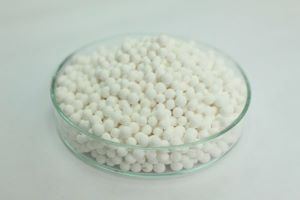Use in Vacuum Systems:
- Employed in fore-line traps of vacuum systems to prevent back streaming of oil from rotary vane pumps.
Catalyst in Production Processes:
- Utilized as a catalyst adsorbent in manufacturing hydrogen peroxide and polyethylene.
- Acts as a selective adsorbent in the Claus Catalyst process, removing impurities like Arsenic, Fluoride, and Sulfur from gas streams.
Regeneration and Temperature Considerations:
- Can be regenerated to full adsorptive capacity by heating between 150°C and 180°C.
- Higher regeneration temperatures lead to longer operating cycles and lower exit dew points for the gas.
- Important to avoid exposure to temperatures above 350°C to maintain long-term performance.
Fluoride Adsorption in Water Treatment:
- Effective in reducing fluoride levels in drinking water, from 10.0 ppm to less than 1.0 ppm.
- Fluoride removal efficiency depends on the contact duration between water and alumina filter media.
- Increasing the alumina amount in the filter improves fluoride removal.
- Lower water temperatures and reduced pH levels enhance filtering efficiency.
- Optimal fluoride removal (up to 95%) is achieved at a pH level of around 5.5
Giới Thiệu Sản Phẩm Nhôm Hoạt Tính: Download


